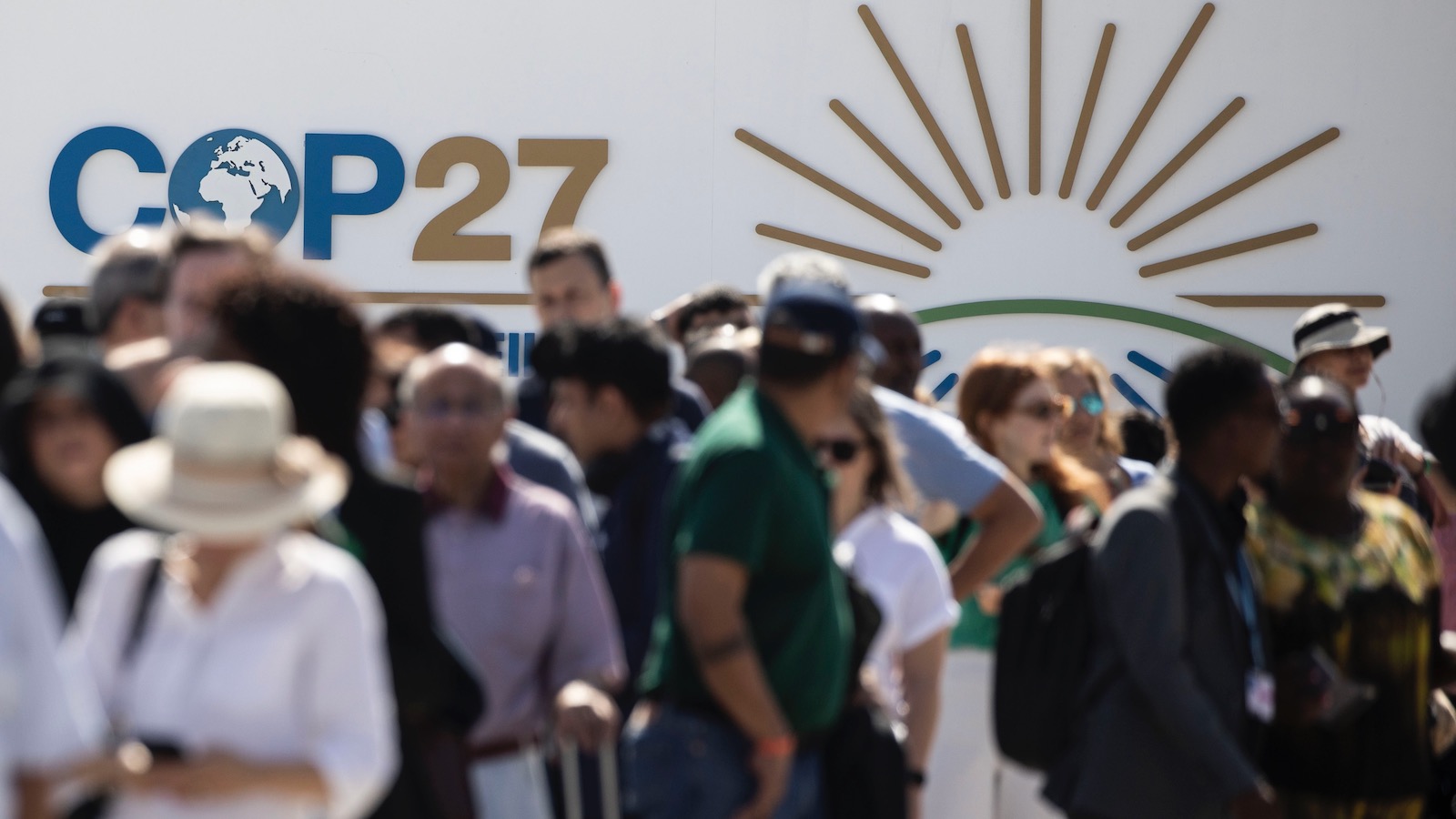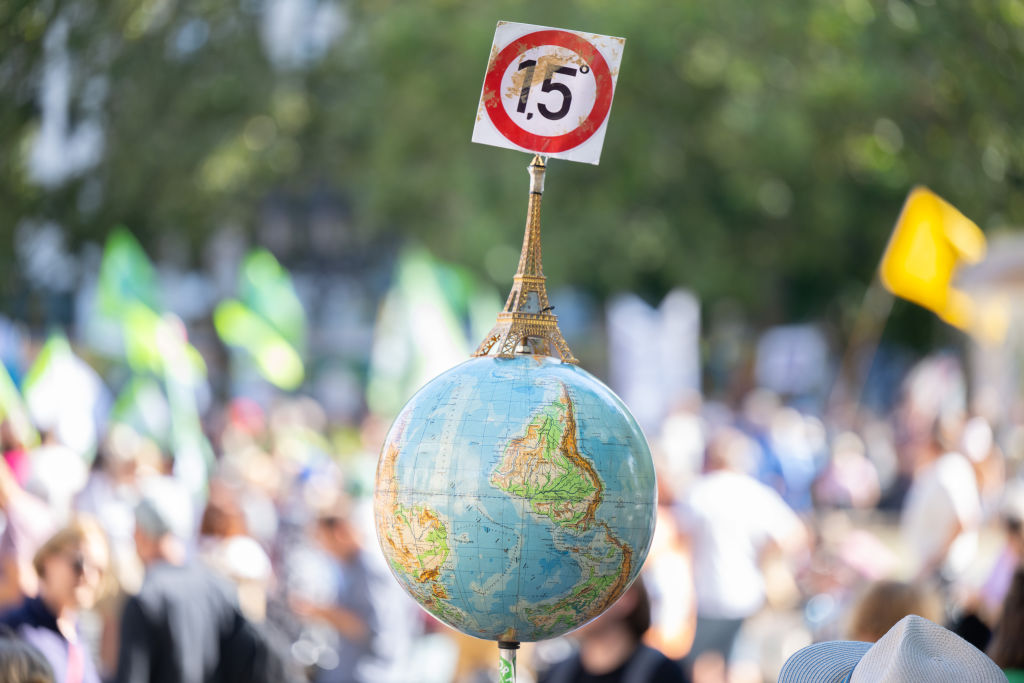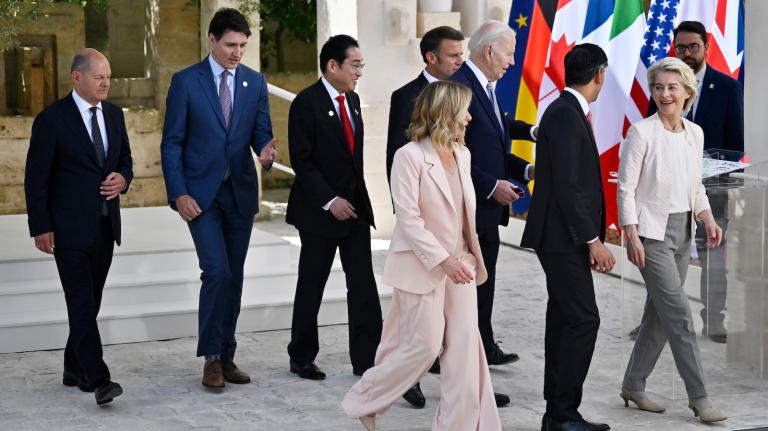Diplomats, academics, and activists from around the globe will gather yet again this week to try to find common ground on a plan for combating climate change. This year’s COP, as the event is known, marks the 28th annual meeting of the Conference of the Parties to the United Nations Framework Convention on Climate Change. More than 70,000 people are expected to descend on Dubai for the occasion.
In addition to marathon negotiations and heated discussions, the fortnight-long assembly will see all manner of marches, rallies, speakers, advocacy, and lobbying. But, aside from fanfare, it remains unclear how much COP28 will, or can, achieve. While there have been signs that the United States and China could deepen their decarbonization commitments, countries have struggled to decide how to compensate developing countries for climate-related losses. Meanwhile, global emissions and temperatures continue climbing at an alarming rate.
That has left some to wonder: Have these annual gatherings outlived their usefulness?
To some, the yearly get-togethers continue to be a critical centerpiece for international climate action, and any tweaks they might need lie mostly around the edges. “They aren’t perfect,” said Tom Evans, a policy analyst for the nonprofit climate change think tank E3G. “[But] they are still important and useful.” While he sees room for improvements — such as greater continuity between COP summits and ensuring ministerial meetings are more substantive — he supports the overall format. “We need to try and find a way to kind of invigorate and revitalize without distracting from the negotiations, which are key.”
Others say the summits no longer sufficiently meet the moment. “The job in hand has changed over the years,” said Rachel Kyte, a climate diplomacy expert and dean emerita of the Fletcher School of Law and Diplomacy at Tufts University. She is among those who believe the annual COP needs to evolve. “Form should follow function,” she said. “And we are using an old form.”
Durwood Zaelke, cofounder and former president of the Center for International Environmental Law, was more blunt. “You can’t say that an agreement that lets a problem grow into an emergency is doing a good job,” he said. “It’s not.”
Established in 1992, the United Nations Framework Convention on Climate Change is an international treaty that aims to stabilize greenhouse gas emissions and avoid the worst effects of climate change. Some 198 countries have ratified the Convention, which has seen some significant wins.
Get caught up on COP28
The 1997 Kyoto Protocol marked the first major breakthrough, and helped propel international action toward reducing emissions — though only some of the commitments are binding, and the United States is notably absent from the list of signatories. The 2015 Paris Agreement laid out an even more robust roadmap for reducing greenhouse gas emissions, with a target of holding global temperature rise to “well below” 2 degrees Celsius (3.6 degrees Fahrenheit) above preindustrial levels, and “pursuing efforts” to limit the increase to 1.5 degrees C (2.7 degrees F).
Although the path to that future is narrowing, it is still within reach, according to the International Energy Agency. But, some experts say, relying primarily on once-a-year COP meetings to get there may no longer be the best approach.
“Multilateral engagement is not the issue anymore,” Christiana Figueres said at a conference earlier this year. She was the executive secretary of the Convention when the Paris agreement was reached, and said that while important issues need to be ironed out on the international level — especially for developing countries — the hardest work must now be done domestically.
“We have to redesign the COPs. … Multilateral attention, frankly, is distracting governments from doing their homework at home,” she said. At another conference a month later, she added, “Honestly, I would prefer 90,000 people stay at home and do their job.”
Kyte agrees and thinks it’s time to take at least a step back from festival-like gatherings and toward more focused, year-round work on the crisis at hand. “The U.N. has to find a way to break us into working groups to get things done,” she said. “And then work us back together into less of a jamboree and more of a somber working event.”
The list of potential topics for working groups to tackle is long, from ensuring a just transition to reigning in the use of coal. But one area that Zaelke points to as a possible exemplar for a sectoral approach is reducing emissions of methane, a greenhouse gas with more than 80 times the warming power of carbon dioxide in the first 20 years after it reaches the atmosphere.
“Methane is the blow torch that’s pushing us from global warming to global boiling,” he said. “It’s the single biggest and fastest way to turn down the heat.”
To tackle the methane problem, Zaelke points to another international agreement as a model: the Montreal Protocol. Adopted in 1987, that treaty was aimed at regulating chemicals that deplete the atmosphere’s ozone layer, and it has been a resounding success. The pollutants have been almost completely phased out and the ozone layer is on track to recover by the middle of the century. The compact was expanded in 2016 to include another class of chemicals, hydrochlorofluorocarbons.
“It’s an under-appreciated treaty, and it’s an under-appreciated model,” said Zaelke, noting that it included legally binding measures that the Paris agreement does not. “You could easily come to the conclusion we need another sectoral agreement for methane.”
Zaelke could see this tactic applying to other sectors as well, such as shipping and agriculture. Some advocates — including at least eight governments and the World Health Organization — have also called for a “Fossil Fuel Non-Proliferation Treaty,” said Harjeet Singh, the global engagement director for the initiative. Like Zaelke, Kyte, and others, he envisions such sectoral pushes as running complementary to the main Convention process — a framework that, while flawed, he believes can continue to play an important role.
“The amount of time we spend negotiating each and every paragraph, line, comma, semicolon is just unimaginable and a colossal waste of time,” he said of the annual events. But he adds that the forum is still crucial, in part because every country enjoys an equal amount of voting power, no matter its size or clout.
“I don’t see any other space which is as powerful as this to deliver climate justice,” he said. “We need more tools and more processes, but we cannot lose the space.”





